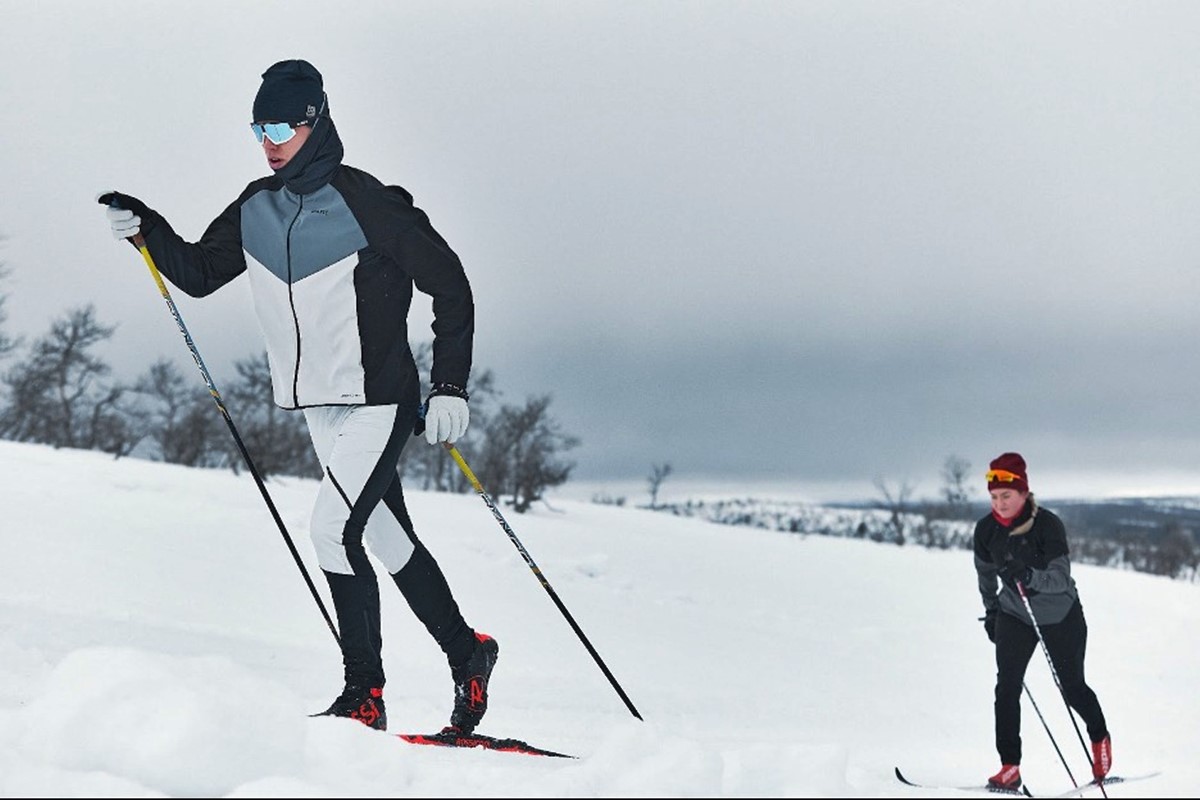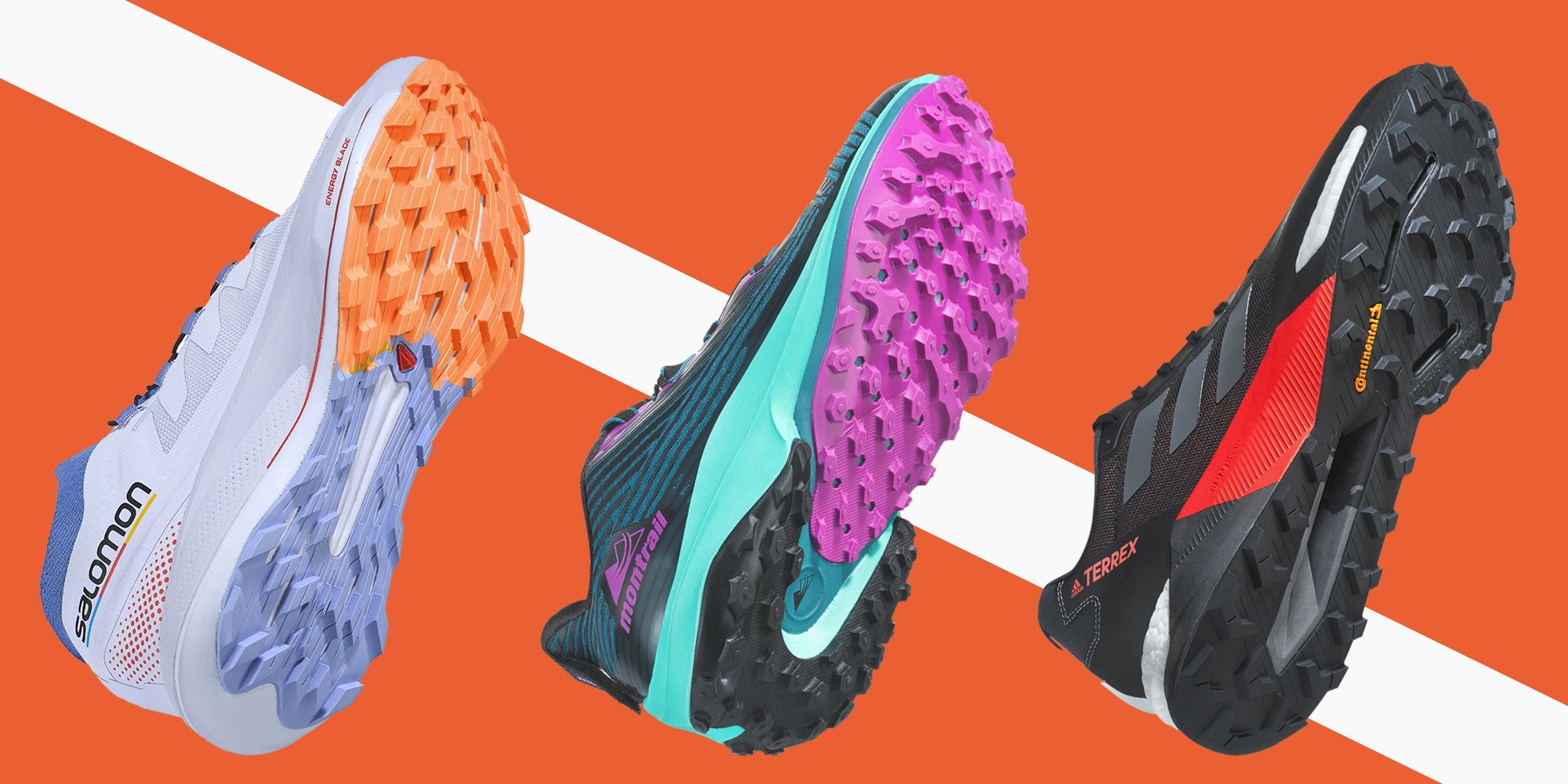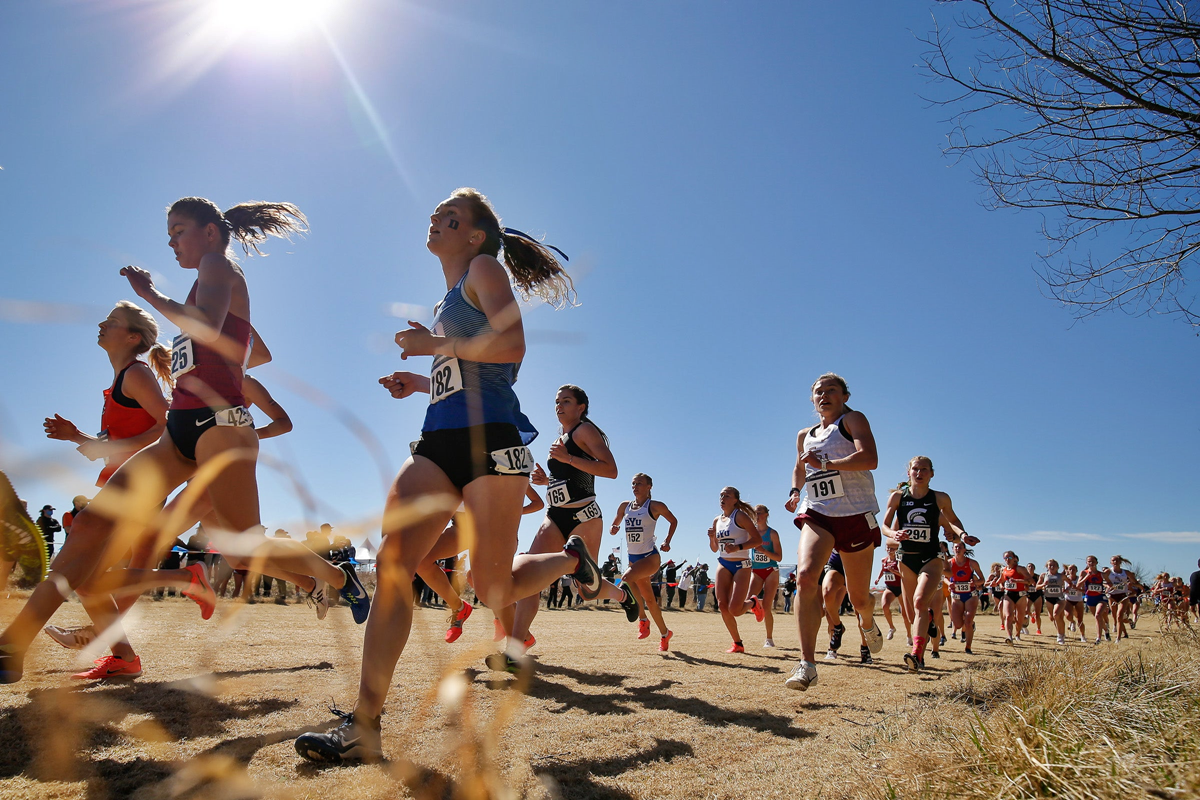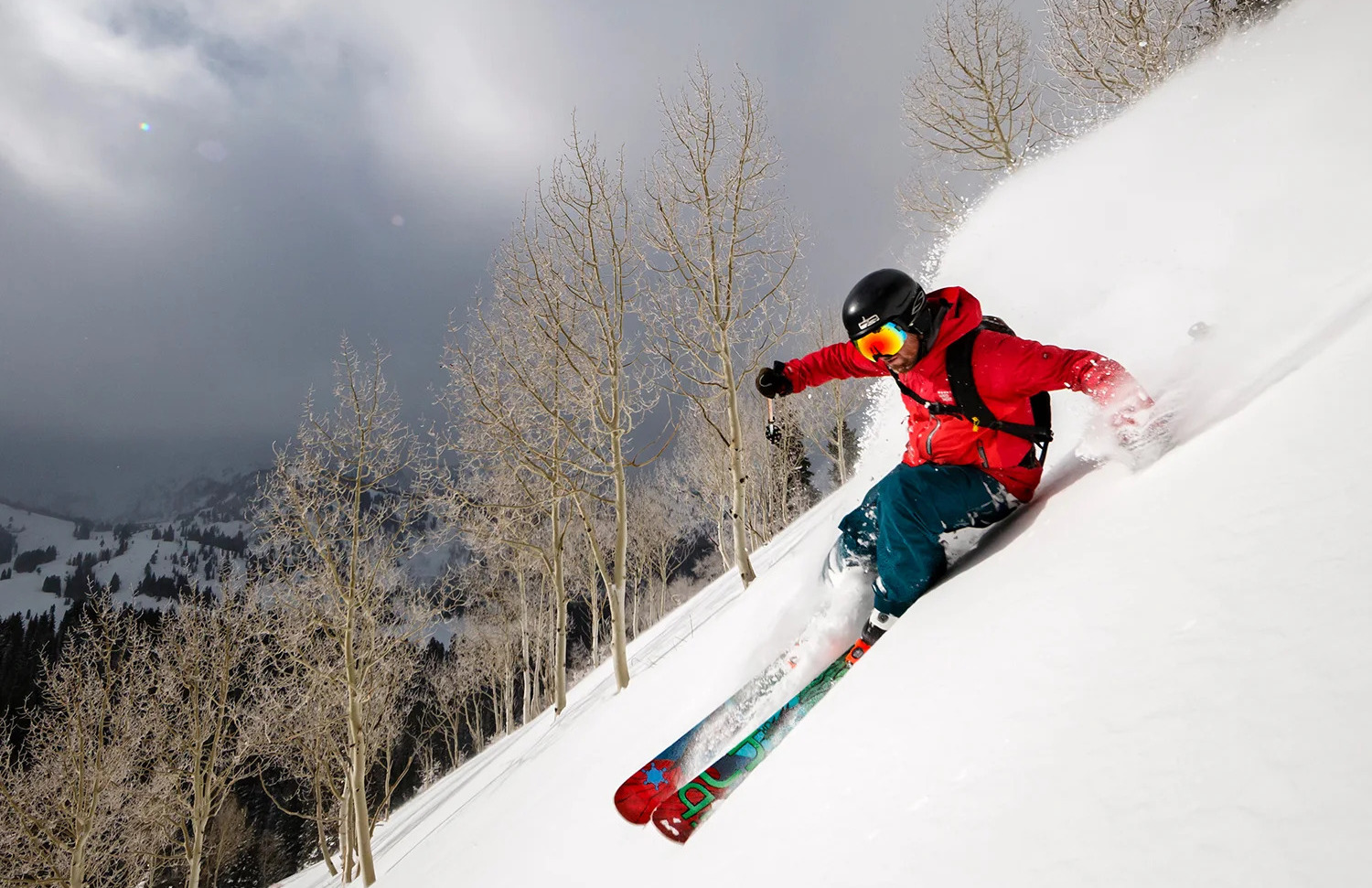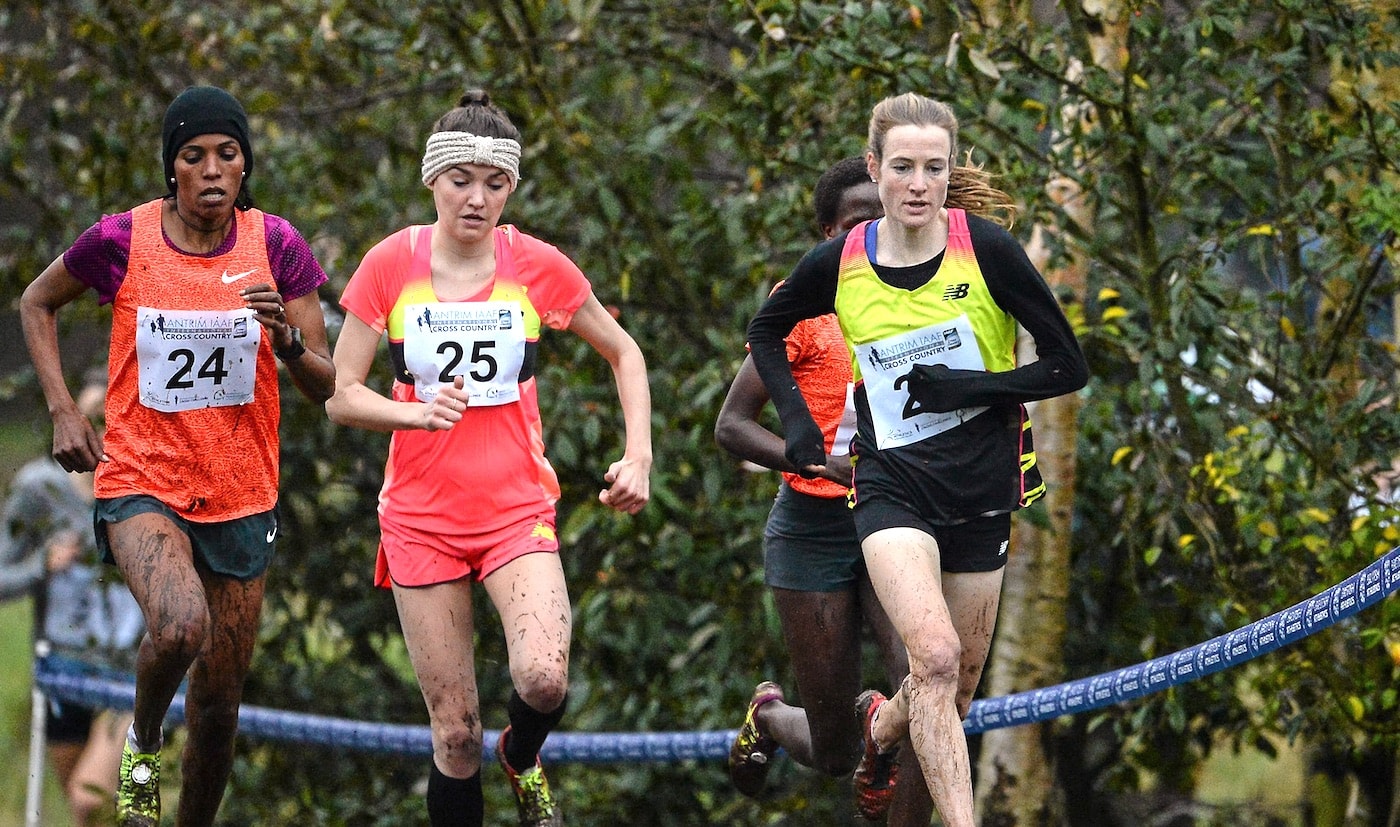

Featured
What To Wear For Cross Country Running
Modified: August 22, 2023
Discover the best featured outfits for cross country running. Find out what to wear to enhance your performance and keep you comfortable on the track.
Introduction
When it comes to cross country running, choosing the right attire is not just about looking stylish; it’s about optimizing your performance and protecting your body. Whether you’re a beginner or an experienced runner, wearing the appropriate clothing can make a significant difference in your comfort and overall experience on the trails.
In this article, we will delve into the world of cross country running attire and explore the essential elements to consider when selecting your outfit. From choosing the right shoes to selecting the perfect tops and bottoms, we’ll cover everything you need to know to ensure you’re dressed appropriately for your cross country adventures.
Why does attire matter in cross country running? Well, for starters, the right clothing can help enhance your performance by providing the necessary support, flexibility, and breathability. It can also protect your body from the elements and reduce the risk of injuries such as blisters or chafing. Additionally, wearing the right gear can boost your confidence and put you in the right mindset for a successful run.
However, it’s important to note that there is no one-size-fits-all when it comes to cross country running attire. Each individual’s preferences and body may differ, making it crucial to find what works best for you. Through trial and error, you’ll discover the perfect combination of clothing and accessories that align with your needs and personal style.
Now that we understand the significance of proper attire, let’s delve into the key factors you should consider when selecting your cross country running outfit. From choosing the right shoes to selecting tops, bottoms, and accessories, we’ll guide you on how to make informed decisions that will enhance your performance and comfort on the trails. Strap in and get ready, because we’re about to embark on an exciting sartorial journey!
Importance of Proper Attire in Cross Country Running
Proper attire plays a crucial role in cross country running, providing numerous benefits that can significantly impact your performance and overall enjoyment of the sport. Let’s take a closer look at why selecting the right clothing is so important.
1. Comfort and Performance: When you’re out on the trails, your comfort should be a top priority. Wearing clothing that fits well and is specifically designed for running can make all the difference. Look for moisture-wicking fabrics that will keep you dry and comfortable by pulling sweat away from your skin. Additionally, choose garments with stretch and flexibility, allowing for a full range of motion without any restrictions. The more comfortable you are, the better you’ll be able to focus on your performance.
2. Protection from the Elements: Cross country running often means facing various weather conditions, from scorching heat to chilly winds and even rain. Proper attire can shield your body from these elements and help maintain a consistent body temperature. In hot weather, opt for lightweight and breathable fabrics that allow airflow and prevent overheating. For colder conditions, layering is key. Start with a moisture-wicking base layer, add a insulating mid-layer, and top it off with a windproof and water-resistant outer shell to keep you warm and dry.
3. Injury Prevention: Running is a high-impact activity that puts stress on your body, particularly your feet. Investing in the right running shoes is crucial to prevent injuries such as shin splints, plantar fasciitis, or stress fractures. Look for shoes that provide proper support and cushioning for your individual foot type and running style. Additionally, wearing moisture-wicking socks can help prevent blisters and chafing that can hinder your performance.
4. Visibility and Safety: In cross country running, it’s important to be visible, especially if you’re running in low-light conditions or near roads. Opt for clothing with reflective elements or wear accessories such as reflective armbands or vests. This will make you more visible to drivers, reducing the risk of accidents. Safety should always be a priority, and proper attire can enhance your visibility and protect you during your runs.
5. Confidence and Mental Focus: Your attire can have a significant impact on your mindset and overall attitude towards running. Wearing clothes that make you feel confident and comfortable can boost your self-esteem and motivate you to push your limits. When you feel good in what you’re wearing, it becomes easier to stay focused and perform at your best.
Now that we understand the importance of proper attire in cross country running, let’s move on to the key factors to consider when choosing your running attire. From shoes to tops, bottoms, and accessories, we’ll guide you through the process of finding the perfect gear for your cross country adventures.
Key Factors to Consider When Choosing Running Attire
Choosing the right running attire is essential for a comfortable and successful cross country running experience. Here are some key factors to consider when selecting your gear:
1. Fit and Comfort: The fit of your running attire is critical. Look for clothing that fits snugly but allows for a full range of motion. Avoid anything too tight or restrictive that may hinder your movement. Pay attention to details like flat seams to prevent chafing and irritation during longer runs. Remember, comfort is key for an enjoyable running experience.
2. Fabric and Breathability: Opt for moisture-wicking fabrics that draw sweat away from your skin to keep you dry and comfortable. Look for materials such as polyester or nylon blends with mesh panels for added breathability. These fabrics will help regulate your body temperature and prevent overheating.
3. Layering and Weather Adaptability: Cross country running often involves varying weather conditions. Plan for different temperatures by layering your clothing. Start with a moisture-wicking base layer, add a lightweight mid-layer for insulation, and top it off with a weather-resistant outer shell. This way, you can easily adjust your attire as needed during your runs.
4. Shoe Selection: Your running shoes are arguably the most important piece of attire. Invest in a pair that provides proper support, cushioning, and stability. Consider factors such as your foot type, arch support, and pronation when choosing the right shoes for your feet. Visit a specialty running store for a professional fitting and advice.
5. Reflectivity: If you plan to run in low-light conditions or near traffic, opt for clothing with reflective elements. These reflective accents will ensure you’re visible to drivers and help keep you safe during your runs. Accessories such as reflective armbands or vests can also be worn to increase visibility.
6. Durability: Running apparel should be made from durable materials that can withstand the rigors of regular use. Look for quality construction and reinforced seams to ensure longevity. Investing in durable gear will save you money in the long run.
7. Personal Style: While functionality is important, don’t forget to express your personal style through your running attire. Choose colors and designs that resonate with you and make you feel motivated and confident.
By considering these key factors when choosing your running attire, you’ll be equipped with gear that enhances your performance and keeps you comfortable during your cross country runs. Now, let’s move on to discuss the specific considerations when selecting running shoes.
Choosing the Right Running Shoes
When it comes to cross country running, your choice of running shoes is of utmost importance. The right pair of shoes can prevent injuries, provide comfort, and enhance your overall running experience. Here are some factors to consider when selecting your running shoes:
1. Foot Type: Determine your foot type to find the appropriate shoe. There are three main categories: neutral, overpronation, and underpronation (or supination). Each type requires different levels of support and cushioning. Visit a specialty running store for a gait analysis to help identify your foot type.
2. Arch Support: Consider the level of arch support you need. High arches typically benefit from shoes with more cushioning and support, while flat feet may require stability or motion control shoes. Understanding your arch type will guide you towards the right shoe for your specific needs.
3. Shoe Size and Fit: The correct shoe size and fit are crucial for comfort and injury prevention. Make sure you have enough room in the toe box to prevent blisters and black toenails. Aim for a snug fit around the midfoot and heel to provide stability. Remember that shoe sizes may vary between brands, so try on several options and go with the most comfortable fit.
4. Terrain and Trail Conditions: Consider the terrain you’ll be running on. If you frequently run on rugged trails, opt for trail running shoes with aggressive lug patterns for grip and stability. If you mainly run on well-maintained paths, road running shoes may suffice. Some runners opt for hybrid shoes that provide versatility for both terrains.
5. Cushioning and Support: Choose shoes with the right level of cushioning and support for your running style and distance. Cushioning helps absorb impact, while support aids in foot stability. Lightweight shoes with minimal cushioning may be suitable for shorter distances and faster paces, while long-distance runners may benefit from more cushioning and support.
6. Try Before You Buy: Always try on running shoes before making a purchase. Take them for a test run in the store or on a treadmill if possible. Pay attention to any discomfort, tight spots, or areas of rubbing. Trust your own comfort and instincts when deciding on the right pair.
7. Budget: Determine your budget but also keep in mind that investing in quality running shoes is essential. While it may be tempting to opt for cheaper alternatives, they may lack the necessary features and durability required for cross country running. Consider your shoes as an investment in your running performance and overall foot health.
Remember, the perfect running shoe is a personal choice that depends on factors such as your running mechanics, comfort preferences, and foot characteristics. Seeking professional advice from a specialty running store can provide valuable guidance and insight into finding the right shoes for you.
Now that you understand the importance of selecting the right footwear, let’s move on to discuss the considerations for choosing tops and bottoms for cross country running.
Selecting Tops and Bottoms for Cross Country Running
Choosing the right tops and bottoms for cross country running is essential to ensure comfort, freedom of movement, and protection from the elements. Here are some considerations when selecting your running apparel:
1. Moisture-Wicking Fabrics: Look for tops and bottoms made from moisture-wicking fabrics such as polyester or nylon blends. These materials efficiently pull sweat away from your skin, keeping you dry and comfortable throughout your run.
2. Breathability: Cross country running often involves intense physical activity, so opt for clothing with breathable properties. Look for garments with mesh panels or ventilation features that allow for optimal airflow, preventing overheating.
3. Fit and Comfort: Choose tops and bottoms with a comfortable and snug fit. Avoid anything too tight or restrictive that may hinder your freedom of movement. Look for flat seams and tagless design to prevent chafing or irritation during longer runs.
4. Layering and Versatility: Consider the versatility of your running apparel. Layering allows you to adapt to changing weather conditions. Start with a moisture-wicking base layer to keep you dry, add a lightweight mid-layer for insulation, and top it off with a weather-resistant outer shell for wind or rain protection.
5. Reflective Elements: If you run in low-light conditions or near traffic, select tops or bottoms with reflective elements to enhance your visibility. These reflective accents help keep you safe by making you more visible to drivers.
6. Sun Protection: Shield yourself from the sun’s harmful rays by choosing tops and bottoms with built-in UPF (Ultraviolet Protection Factor) or opt for lightweight, long-sleeved shirts and leggings to provide coverage. Additionally, wearing a hat and sunglasses can help protect your face and eyes from sun exposure.
7. Pockets and Storage: Consider the need for pockets or storage options in your running apparel. Pockets can come in handy for carrying essentials like keys, energy gels, or your phone. Look for garments with zippered or secure pockets to prevent items from falling out during your run.
8. Bottoms: For bottoms, choose shorts or leggings that provide comfort and flexibility. Look for an adjustable waistband that allows for a secure fit. Consider the length and coverage you prefer, whether it’s shorter shorts for warmer weather or full-length leggings for colder temperatures or added compression.
9. Tops: For tops, opt for sleeveless, short-sleeved, or long-sleeved options depending on the weather and your personal preference. Consider the breathability and moisture-wicking properties of the fabric. Look for designs that allow for a full range of arm movement and provide adequate coverage.
By taking these factors into account, you can select tops and bottoms that will enhance your comfort, performance, and overall enjoyment during your cross country runs. Now, let’s move on to discussing some appropriate accessories to complement your running attire.
Appropriate Accessories for Cross Country Running
Accessorizing for cross country running can enhance your comfort, safety, and overall running experience. Here are some key accessories to consider:
1. Running Hat or Visor: A lightweight and breathable running hat or visor can provide protection from the sun and help keep sweat out of your eyes. Look for moisture-wicking materials and adjustable features to ensure a comfortable fit.
2. Sunglasses: Invest in a pair of sport sunglasses with UV protection to shield your eyes from harmful sun rays and reduce glare. Look for lightweight, durable frames that won’t slide or bounce during your runs.
3. Running Gloves: Running gloves can provide warmth and protection during colder temperatures. Opt for lightweight, moisture-wicking gloves that offer touchscreen compatibility, allowing you to use your smartphone without removing them.
4. Compression Sleeves or Socks: Compression sleeves or socks can improve circulation, reduce muscle fatigue, and aid in recovery. They can also provide additional support and stabilize your muscles during high-impact activities like cross country running.
5. Reflective Gear: Enhance your visibility during low-light conditions with reflective accessories. Reflective armbands, vests, or ankle bands can help make you more visible to drivers and other runners during early morning or evening runs.
6. Hydration Gear: Stay hydrated during your runs with a hydration belt, handheld water bottle, or hydration vest. Look for options that are lightweight, adjustable, and comfortable to carry water or sports drinks without hindering your movement.
7. Running Watch or GPS Device: Track your distance, pace, and heart rate with a running watch or GPS device. These devices provide valuable data to monitor your progress and help you set goals for your cross country training.
8. Music or Podcast Player: If you enjoy listening to music or podcasts while running, invest in a lightweight music player or use your smartphone with a secure armband. Choose wireless headphones to eliminate the hassle of tangled wires during your runs.
9. Foam Roller or Massage Ball: Aid in recovery and prevent muscle soreness with foam rollers or massage balls. These tools can help release tension, improve flexibility, and reduce muscle tightness after a challenging cross country run.
10. First Aid Kit: Be prepared for any minor injuries or blisters by carrying a small first aid kit. Include adhesive bandages, blister cushions, antiseptic wipes, and any necessary medication.
These accessories can enhance your comfort, safety, and performance during cross country running. Choose the ones that align with your needs and preferences to enhance your overall running experience. Now, let’s move on to discussing some tips for dressing in different weather conditions.
Tips for Dressing in Different Weather Conditions
As a cross country runner, you’ll encounter various weather conditions throughout the year. Properly dressing for these conditions is essential to ensure your comfort and safety during your runs. Here are some tips for dressing in different weather conditions:
1. Hot Weather:
- Opt for lightweight, moisture-wicking clothing that allows for maximum breathability. Look for mesh panels or ventilation features to promote airflow.
- Choose shorts or lightweight, loose-fitting clothing to allow for better air circulation and prevent overheating.
- Wear a hat or visor to shade your face from the sun.
- Apply sunscreen to exposed skin to protect against harmful UV rays.
- Stay hydrated by carrying a handheld water bottle or wearing a hydration belt.
2. Cold Weather:
- Layer your clothing to trap heat and provide insulation. Start with a moisture-wicking base layer, add a thermal mid-layer, and top it off with a weather-resistant outer shell.
- Wear long-sleeved tops and leggings to provide additional coverage and warmth.
- Consider wearing a hat, gloves, and neck gaiter to protect your extremities from the cold.
- Choose thermal socks or compression sleeves to keep your feet warm.
- Protect your eyes from glare and harsh winds by wearing sunglasses.
3. Wet or Rainy Weather:
- Invest in waterproof or water-resistant outerwear to keep you dry during rainy runs.
- Wear moisture-wicking fabrics that dry quickly to prevent discomfort and chafing.
- Consider wearing a hat or visor with a brim to shield your face from raindrops.
- Choose waterproof or water-resistant trail running shoes with enhanced grip to maintain traction on wet surfaces.
- Carry a small towel to wipe off excess moisture or raindrops.
4. Windy Weather:
- Layer your clothing to provide protection against wind chill. Wear a wind-resistant outer shell to block the wind.
- Consider wearing a hat or headband to keep your ears warm and prevent heat loss.
- Choose form-fitting clothing that won’t flap in the wind and cause discomfort.
- Protect your eyes by wearing sunglasses to prevent debris from getting into your eyes.
- Seek sheltered running routes to minimize exposure to strong gusts of wind.
5. Variable Weather:
- Be prepared for changing weather conditions by layering your clothing.
- Wear moisture-wicking fabrics that can adapt to different temperatures and weather fluctuations.
- Carry a lightweight, packable jacket or vest that you can easily add or remove during your run.
- Consider accessories like arm warmers or a lightweight hat that can be easily stowed away if not needed.
- Check the weather forecast before heading out and adjust your attire accordingly.
By following these tips, you’ll be able to dress appropriately for various weather conditions, ensuring your comfort and safety during your cross country runs. Now, let’s wrap up with a summary and recap of the key points discussed.
Conclusion
Proper attire is crucial for cross country running, as it directly impacts your performance, comfort, and overall running experience. By considering key factors such as fit, fabric, weather conditions, and personal preferences, you can select the right gear that meets your needs.
When choosing running attire, prioritize comfort and functionality. Look for moisture-wicking fabrics that keep you dry and comfortable, and opt for clothing that allows for a full range of motion. Consider layering options to adapt to changing weather conditions and choose reflective elements to enhance visibility and safety. Additionally, investing in the right running shoes is essential for proper support and injury prevention.
Accessories play a vital role in enhancing your running experience. Choose accessories like hats, sunglasses, hydration gear, and reflective elements to improve comfort, protect yourself from the elements, and ensure visibility, especially in low-light conditions. Lastly, be mindful of dressing appropriately for different weather conditions, whether it’s hot, cold, wet, windy, or variable.
Remember, finding the perfect running attire is a personal journey that requires experimentation and listening to your body. Pay attention to how you feel during your runs and make adjustments as needed. Ultimately, the right attire will enhance your performance, boost your confidence, and make your cross country running adventures more enjoyable.
So, lace up your shoes, put on your best gear, and hit the trails with confidence. The right attire will make all the difference in your cross country running journey!


